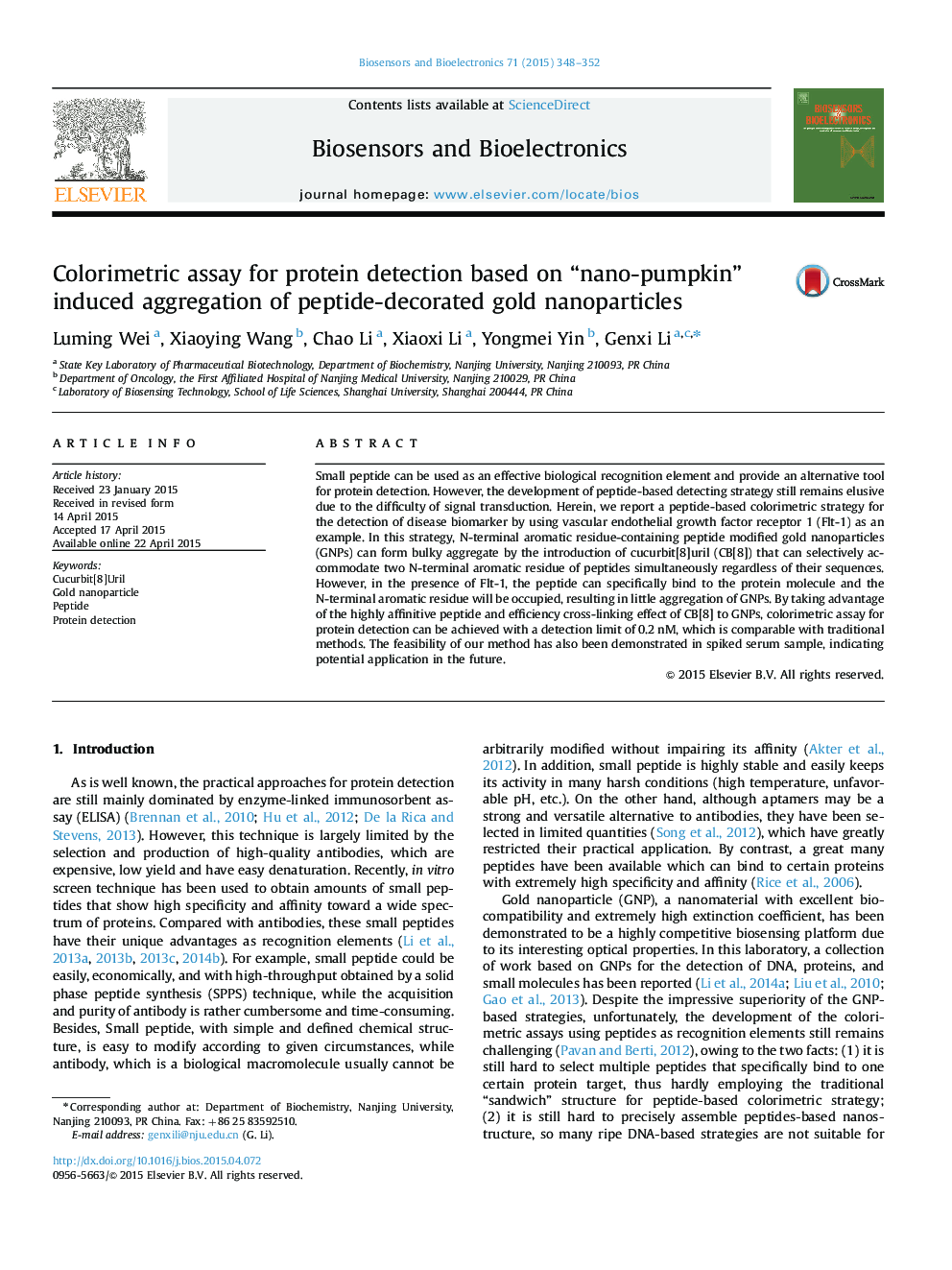| Article ID | Journal | Published Year | Pages | File Type |
|---|---|---|---|---|
| 7232175 | Biosensors and Bioelectronics | 2015 | 5 Pages |
Abstract
Small peptide can be used as an effective biological recognition element and provide an alternative tool for protein detection. However, the development of peptide-based detecting strategy still remains elusive due to the difficulty of signal transduction. Herein, we report a peptide-based colorimetric strategy for the detection of disease biomarker by using vascular endothelial growth factor receptor 1 (Flt-1) as an example. In this strategy, N-terminal aromatic residue-containing peptide modified gold nanoparticles (GNPs) can form bulky aggregate by the introduction of cucurbit[8]uril (CB[8]) that can selectively accommodate two N-terminal aromatic residue of peptides simultaneously regardless of their sequences. However, in the presence of Flt-1, the peptide can specifically bind to the protein molecule and the N-terminal aromatic residue will be occupied, resulting in little aggregation of GNPs. By taking advantage of the highly affinitive peptide and efficiency cross-linking effect of CB[8] to GNPs, colorimetric assay for protein detection can be achieved with a detection limit of 0.2Â nM, which is comparable with traditional methods. The feasibility of our method has also been demonstrated in spiked serum sample, indicating potential application in the future.
Related Topics
Physical Sciences and Engineering
Chemistry
Analytical Chemistry
Authors
Luming Wei, Xiaoying Wang, Chao Li, Xiaoxi Li, Yongmei Yin, Genxi Li,
